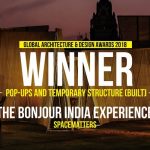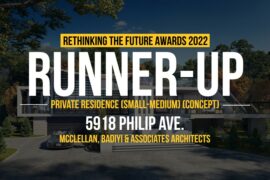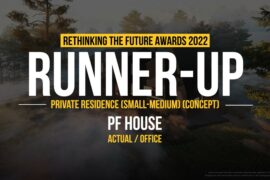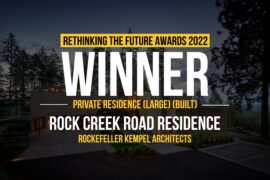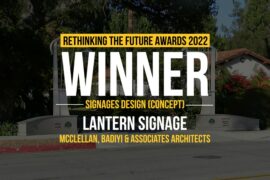The school was invited, along with 5 other schools of architecture, to participate in the inaugural Exhibit Columbus Biennale, to be held in Columbus, Indiana, a mecca for modern architecture in the Midwest. Each school was tasked to design and fabricate a pavilion for the August, 2017 opening. From the prompt, “These projects should represent the state of architectural education as well as speculate on possible trajectories of the discipline. These temporary installations have the potential to be a catalyst for changing the way we design and build in the Midwest, enhancing partnerships between designers and manufacturers, and expanding design literacy through education”.
Global Architecture & Design Awards 2018
Second Award | Category: Pop-Ups and Temporary Structure (Built)
Architects: Terry Boling
Country: USA

Following the studio and exhibition, The University was invited to participate in the “Time Space Existence” exhibition running parallel to the 2018 Venice Biennale. We created another studio with graduate students to re-tool significant details and modular components, design and build custom crates to pack them and ship them to Venice on a shipping container, and then assemble the pavilion in Venice.

Our framework for approaching the design problem was concerned less with emerging technologies for form-making and manufacturing, and instead focused on evaluating the incredible array of waste and embodied energy resulting from such practices. The design process began by visiting industries across the Midwest, searching for inspiration in piles of leftover stone, wood, metals, and other discarded manufactured products. The pedagogy embedded in this research required us to design with what was at hand, as we gathered materials and components and began a slow period of rigorous yet playful experimentation. We were especially interested in Industrial detritus- the hard facts of industrial production and waste in the Midwest- and how, through careful and thoughtful re-consideration and crafting of left-over materials, a new appreciation for their embodied energies can emerge. Our research began by mining for materials that were destined for the landfill, including richly carved limestone cut-offs, decorative ceramic tiles with minor flaws, waste strips of solid-surface material from countertops, intricately shaped copper profiles from a local electrical parts industry, and hundred-year-old wood beams salvaged from a local church.

The project demonstrates the simple philosophical position of Alchemy; transmuting base matter into gold. At the heart of this position is the notion of direct experimentation as a form of research, and the belief that change & transformation can happen through optimistic speculation- turning the banal and discarded into things of wonder and beauty. Students conducted full-scale experiments with the materials in advance of any form or predetermined function- we were simply concerned with what the materials and artifacts could do, and which generative opportunities could be discovered. The collection of prototypes was dubbed the “cabinet of curiosities” by the students, and was used to suggest possible assemblies for our pavilion.

We present a position that is uniquely Midwestern and particular to our city- a constructed terroir that embodies material, place, and experience. All work was designed, fabricated, and assembled by the students and the professor.
If you’ve missed participating in this award, don’t worry. RTF’s next series of Awards for Excellence in Architecture & Design – is open for Registration.
Click Here



